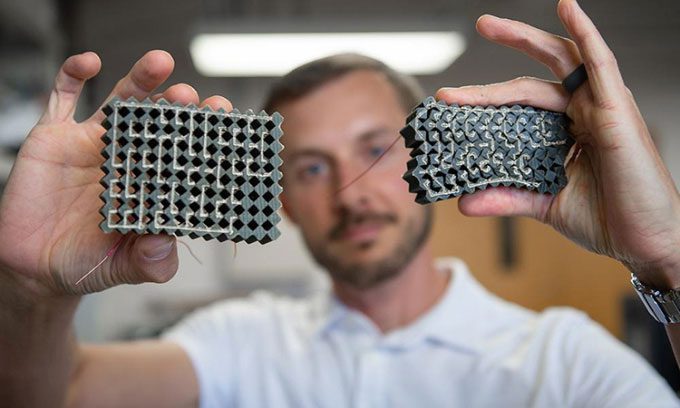American scientists develop an advanced material capable of processing information similarly to the human brain.
When someone taps you on the shoulder, organized sensory receptors in your skin send a message to your brain. The brain then processes this information and instructs you to look left or right in the direction of the person who tapped you. Now, researchers from Penn State University (PSU) and the U.S. Air Force have harnessed this mechanical information processing and integrated it into a type of material that can “think and feel.”
According to research published in the journal Nature on August 24, the new material is based on integrated circuits, typically consisting of various electronic components placed on a single soft semiconductor material like silicon to process information in a manner similar to the brain’s role in the human body.

Integrated circuit material can sense and respond to input signals like mechanical force. (Photo: PSU)
Ryan Harne, an associate professor of mechanical engineering at PSU and the lead author of the study, stated that almost any material around us can be used to create integrated circuits capable of performing computational tasks.
“We have created the first example of an engineered material that can simultaneously sense, think, and act when subjected to mechanical stress without the need for additional circuits to process those signals. The soft polymer material operates like the brain: it receives strings of digital information, processes them, and generates new strings of digital information to control responses,” Harne explained.
The circuits of the material can reconfigure to recognize combinational logic: when the material receives external stimuli, it converts the input signals into electrical information, processes it, and then generates output signals.
The material can even use mechanical force to perform complex calculations or detect radio frequencies to send light signals for applications such as automated search and rescue systems. It could also be incorporated into hybrid biological materials to locate, isolate, and eliminate airborne pathogens.
In the next phase, the research team aims to further enhance this material to decode image data in a manner similar to how it “senses” physical signals.
“Our goal is to develop a material that demonstrates the ability to navigate autonomously in an environment by seeing signs, tracking them, and avoiding adverse mechanical forces, such as something pressing down on it,” Harne added.


















































